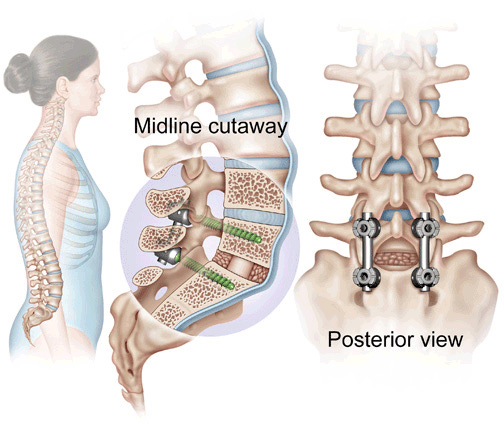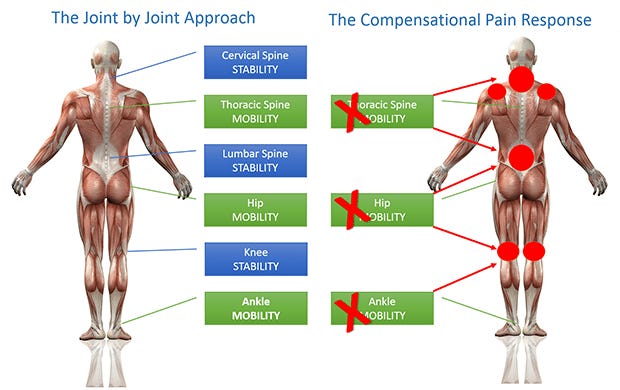
When looking at a lumbar spine fusion surgery, does the spine change movement patterns above and below the site of the fusion thereafter? Such a question is relevant since moving spinal segments (i.e., immediately above and below a fixation) beyond their natural ranges (i.e., flexion, extension, rotation) might have deleterious long-term effects. The following sections will explore the work of Bastian, Lange, Knop, Tusch, and Baluth (2001), their findings, as well as their relevance to the aforementioned question.

Bastian et al. (2001) explored spinal fixation, specifically posterior thoracolumbar fixation, and the effects on segments above and below the immobilized regions. Bastian et al. (2001) noted that although fixations are widely used for the management of unstable spines, degenerative conditions, and neoplasms, the researchers emphasized a conflict between immediate benefit and later consequences; spinal fusion procedures have been reported to have adverse effects such as pseudoarthritis, spinal stenosis, spondylolysis and accelerated degeneration of adjacent segments. Thus, it would be prudent to examine the cost-benefit relationship between relief of temporary pain, and potential long-term degeneration of the spinal column.
Bastian et al. (2001) procured 10 fresh human, cadaveric, thoracolumbar spines that were male (average age: 45 years). The researchers fixated T12-L2 (i.e., independent variable), posteriorly, in a loading jig (see attached picture below). Induced motions within the spine from T10-L4 included flexion (i.e., sagittal, and frontal), extension, and rotation. Motion trackers and sensors were placed above and below the fixated sites to measure changes in the range of motion (ROM) between joints (i.e., dependent variable) (Bastian et al., 2001). Each motion was tested 3 times (i.e., via cycles of loading and unloading), with 30 seconds rest between each cycle to minimize viscoelastic effect of the specimen (Bastian et al., 2001).

Results indicated significant increases in ROM of adjacent segments. Bastian et al. (2001) suggested that adjacent sites that were naturally stiffer (i.e., lumbar spine) would incur larger side effects and potentially accelerated degeneration than a segment that had naturally higher ROM (i.e., thoracic spine). Results from the research of Bastian et al. (2001) suggested that the aforementioned speculations were accurate; ROM below T12-L2 was higher when compared to pre-test.
However, ROM above T12-L2 was also found to be higher when compared to pre-test motions. Finally, ROM increases above and below the fixated thoracolumbar spine were highest in flexion/extension motions, likely due to the nature of a posterior thoracolumbar fixation (Bastian et al., 2001). That is, particular ROM restrictions could be specific to site of fixation (i.e., posterior fixation predominantly restricts sagittal plane motion, lateral fixation predominantly affects frontal plane motion etc…) (Bastian et al., 2001).
In conclusion, comprehension of spinal motion restrictions, either from disease or trauma, helps predict/anticipate ROM side effects. Such knowledge is paramount as it allows medical/exercise professionals the opportunity modify exercise and movements to accommodate hyper mobile/unstable joints. Ultimately, awareness and application of the aforementioned information helps mitigate spinal aggravation, while we seek to restore the health, performance, and longevity of our clientele.
References
Bastian, L., Lange, U., Knop, C., Tusch, G., & Baluth, M. (2001). Evaluation of the mobility of adjacent segments after posterior thoracolumbar fixation: A biomechanical study. European Spine Journal, 10(4), 295-300.
-Michael McIsaac
